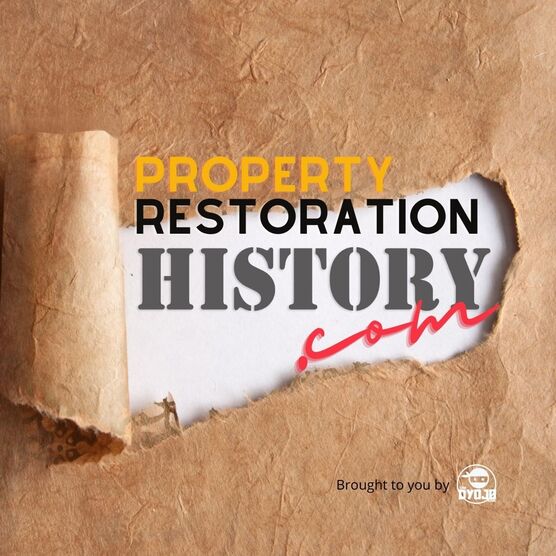|
An overview of property restoration history is provided in this great discussion with Michelle Blevins (C&R Magazine) and Pete Consigli, The Restoration Watchdog - WATCH the full episode "The History of Restoration" on Restoration Today.
0 Comments
IAQ Radio Episode 688 featured Pete Consigli, Cliff Zlotnik, Jon Isaacson, and FOP’s as they discussed their experiences at The Andy Ask Building Science Symposium aka Winter Break 2023. A key feature of this event was the historic PIONEERS OF BUILDING SCIENCE panel. The AABSS 2023 stage hosted a special reunion of groundbreaking building scientists Joseph Lstiburek, Gary Nelson, Neil Moyer John Tooley. Cliff Zlotnik's nuggets mined from the show:
Z-Man comments on Pioneer Panel
Read more from the IAQ Radio blog Watch IAQ Radio Episode 688 Help Cleanfax Magazine to celebrate the industry as ISSA Media commemorates their 100th Anniversary ISSA is a global cleaning industry association and it is entering its 100th year in 2023. Throughout the upcoming year thye want to celebrate their anniversary by highlighting many of the people, products, and brands who helped them reach this important milestone. They need YOUR HELP to nominate and vote.
If so, please complete the form with a nomination. If selected, ISSA will be in touch for more of the story. Cleaning and Restoration Categories include:
Cleaning and Restoration Criteria:
Make Your Nominations Today: Nominations for all categories are open through September 30, 2023. The January/February issue of ISSA Today magazine will feature selected nominees from the Top Influencers category. Complete your Top Influencer nominations by December 30, 2022 for your chance to be included. Follow this link to the ISSA webpage to make your nominations Questions? Please email [email protected] The property restoration industry is an umbrella term for businesses that provide services for a variety of damage related events including water, fire, mold, flooding, hazardous materials, and catastrophes. Property restoration contractors have grown from the private services such as carpet cleaning to vendor relationships with insurance companies to address various needs throughout the world. What do you call the equipment that restoration contractors use for drying water-damaged structures?
The Origins of the Modern Air MoverLloyd Weaver Invents The Porta DryerResponding to catastrophic flooding in Rapid City, South Dakota, Lloyd Weaver adapted the centrifugal fan from a household furnace unit and adapted it for on-location drying of carpets and structural materials. Centrifugal means that the blades of the fan run perpendicular to the flow of air. Prior to this adaptation, carpets were typically removed from the home and dried at the cleaner's warehouse (in-plant drying). Lloyd called his invention the "Porta Dryer". The picture above is compliments of the personal archives of another industry icon, Cliff Zlotnik. Cliff shared some of his memories of Lloyd in the video below. The History of Water Damage RestorationProperty restoration historian and watchdog, Pete Consigli, writes, "Lloyd [Weaver] introduced the first specialty designed Porta Dryer for on-location wet carpet drying. While that might not seem like much in today's sophisticated world, 35 years ago (written in 2007) Lloyd's methodology challenged the rug cleaning establishment and its in-plant wet carpet service." Lloyd Weaver is an icon of the water damage restoration industry, he is the man behind many of the core inventions of the modern age of property restoration as well as an early educator who trained many other industry contributors; as well as butted heads with a few others. See our prior video on Martin "Marty" L. King and learn more about Cliff Zlotnik's contributions to the industry in the video below. 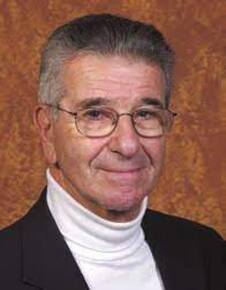 Martin "Marty" L. King's vision was to, "See the business of insurance restoration and damage repair become a profession." In this video, which originally aired as part of The DYOJO Podcast Episode 85, we talk to John Pletcher. Mr. Pletcher was awarded the 2022 MLK Award at the Restoration Industry Association (RIA) Annual Convention. John shares his fond memories of being mentored by and working with Marty. In the mid-1980s the Association of Specialists in Cleaning and Restoration (ASCR), which would eventually be re-branded as RIA, recognized Marty with a lifetime achievement award for his pioneering work since the late 1960s to carve a restoration niche in the larger cleaning and restoration industry as a standalone discipline from remodeling and general contracting or carpet cleaners and janitorial companies who engaged in restoration work as a sideline business activity. In 1986, the lifetime achievement award was renamed the Martin L. King (MLK) Award given to an individual who has, over many years, made significant and conspicuous contributions to the restoration profession. The August 2015 issue of Cleaning and Restoration Magazine (C&R) featured property restoration industry icon Martin “Marty” L. King in remembrance of his passing earlier that year in May. The title of the video attached to this article, “Igniter of an industry,” is recognized as a concise summary of Marty’s contributions to fulfilling his vision for the craft of property restoration. Those four words were penned by another industry founding father, Cliff Zlotnik. For those interested in the history of our industry, Pete Consigli wrote an article recognizing the four faces on Mount Restoration for the same publication (C&R) in March of 2007 which the reader would do well to study. In the 2015 issue previously mentioned, Pete stated, “Marty had a vision for a new and emerging industry he called “damage repair.” Marty’s life’s work was to see the business of damage repair evolve into a profession. Fifty years after Marty had that dream, the legacy of the restoration industry is in the hands of those he influenced and many of those people are preparing to pass on the stewardship of the industry to the next generation. It is the hope of many that the next generation will take the industry to a place never imagined by the industry’s founders.” As part of our ongoing commitment to research and share elements of property restoration history, you can read more and contribute historical content to PropertyRestorationHistory.com As Mr. Consigli says, "Reflecting on Marty’s passing, it is my hope that his teachings and wisdom will be remembered with reverence. In this way, the industry will honor those who paved the path for its success today. This is how we will evolve as succeeding generations seek greatness in the restoration profession.” Additional resources on this topic:
IAQ Radio, episode 426 from August 12, 2016 featured John Downey, Ken Larsen, and Cliff Zlotnik. The group discussed, "Two articles which appeared in the August issue of the IICRC Journal along with details from the story behind them." While this description may not grab your attention, if you are involved in water damage or the property restoration industry, the content of the articles and the discussion on this podcast are important. Cliff and Ken expressed their concerns over the state of the water damage restoration industry with pointed critiques of the foundation behind the IICRC Applied Structural Drying certification and its subsequent incorporation into the IICRC S500 Standard and Reference Guide for Professional Water Damage Restoration. This episode discusses:
Is Applied Structural Drying (ASD) Scientific?According to Cliff Zlotnik, no one knows "chapters and verse of the S500 better than Ken Larsen. Ken noted that in May 2012, the Journal of Environmental Health demonstrated that a water loss responded to within four hours showed an exponential increase (orders of magnitude) of microbial growth in floor materials. He was disappointed that so few IICRC insiders and leadership acknowledged the results of the research's feedback. Cliff Zlotnik writes in the IAQ Radio blog and show recap expanding on Ken's comments from the show, Problems on water claims is a dominant theme. Contractors find their lack of control on their projects discouraging. Many declare water restoration work is no longer fun or rewarding. The bureaucracy and loss of control is a challenge to contractor’s patience and tolerance. Contractor’s are exhausted by the demand to provide non-compensated services and mandatory investment and utilization of drying documentation software. All these demands stem from the IICRC. The IICRC is the source of these ideas. Readership has been supportive of our method to inspire the IICRC to make the needed corrections. Is Top-Down Drying Realistic?Cliff Zlotnik was motivated to write his article after attending both of the early in-place drying courses. He said that he felt uneasy and uncomfortable about the methodologies for “top-down drying” being taught to restorers. After testing the theories in his original Restoration Science Academy training center he came to different conclusions. Cliff thinks the training courses were unrealistic and summarized part of the fix in tese words, Simplify curriculum, remove complication. To paraphrase the late Jim Darling’s recommendation that the IICRC mold remediation course for workers’ whose first language was other than English could be done in 4 words: “mold bad-clean good!” Drying is pretty simple “wet bad-dry good”; we need to show workers how to get there. Lloyd’s [Weaver] method was simple and it worked. When the IICRC changed the WRT curriculum and exam and added committee “Made Up Stuff”: the IICRC drying formulas, equipment placements formulas, categories of wetness; I could no longer teach it. The photos in the article show air passing through materials and into interstitial spaces. Adjusting curriculum away from the dominance of in-place drying would be a good start. The Role of Water Damage Drying StandardsPete Consigli mentioned that good intentions, such as quicker drying times, can sometimes lead to unintended negative outcomes. He recommended the following, Get away from prescriptive standards. Move to performance based standards. The separation of standards from the reference guide will reduce the confusion. Reference guide is being used and referred to as authoritative when it isn’t. The DYOJO Podcast conducted an interview with Ed Cross which also uncovered aspects of the development of IICRC Standards as well as the evolution of the Restoration Industry Association (RIA). This interview goes into the last 25 years of Ed's involvement with advocating for property restoration contractors and his pivotal role in the formation and momentum of the RIA's AGA Committee. The episode is titled, "A History of Collaboration, a Future of Advocacy" and is accompanied by an article in Restoration and Remediation Magazine (R&R) by the same name. Highlights include:
Jim Thompson shares a funny story about the early days of the Restoration Industry Association (RIA) when it had the unfortunate acronym of AIDS (Association of Interior Design Specialists). Large loss specialist and trainer Jim Thompson sat down with Jon Isaacson to discuss his life experiences and the content of his new book, “My Life Is One Disaster After Another.” Jim started from the ground up as a public adjuster, moved into cleaning and property restoration, before taking some time away to work with NASA (yes, THAT NASA). Jim didn’t think he would return to the industry but found something he enjoyed training local contractors to market, win, and complete large losses. Projects for commercial, residential, industrial, and catastrophic disaster response, Mr. Thompson has done it all. He has compiled his 40 plus years of experience and is sharing it in written form with those willing to listen. Our conversation also touches on:
Guest appearances and shoutouts for:
John Downey calls himself a "formerly important person" but he is far from hanging up his hat and retiring. The founder of Cleanfax is busy with his work as the executive director of CIRI, the Cleaning Industry Research Institute. In this special on-location interview, Downey discusses his work and what he is doing to help promote the value of cleaning. John and interviewer Jeff Cross discuss some funny stories from the early days of Cleanfax Magazine. Pete Consigli, the Global Restoration Watchdog, and Jon Isaacson co-authored an article in Cleanfax Magazine.
Building A Bridge From Restoration's Founding Fathers To The Modern Restorer. Pete and Jon discuss how modern restorers can explore the restoration industry's rich history and use many of those mindsets and habits to build a strong future. Consigli says, “It is critical, following a loss, that a process starts with a meeting of the minds among the three parties that are central to a disaster restoration project,” what he refers to as the “Restoration Triangle,” made up of the property owner, insurance carrier, and restoration contractor of record. He humorously summarizes these parties as “who’s damaged,” “who’s fixin’ it,” and “who’s payin’ for it.” Read more, for free, in the latest print and online volume of Cleanfax Magazine. |
AuthorWe are tracking down and sharing the people, innovations, movements, and other fun facts from the evolution of the property restoration industry. Please reach out if you have stories and relics to share. Archives
July 2023
Categories
All
Sponsors: |
|
|
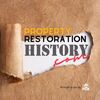
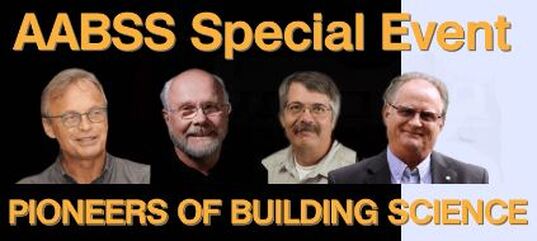
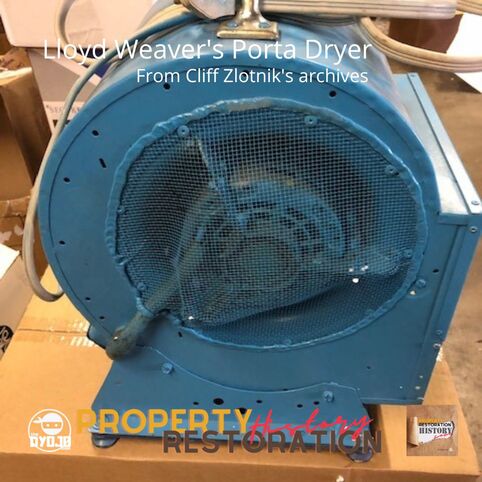
 RSS Feed
RSS Feed

